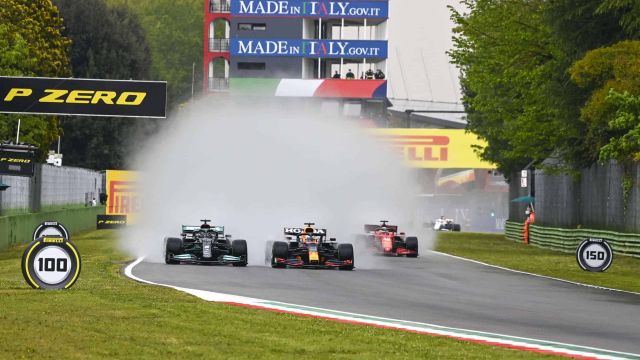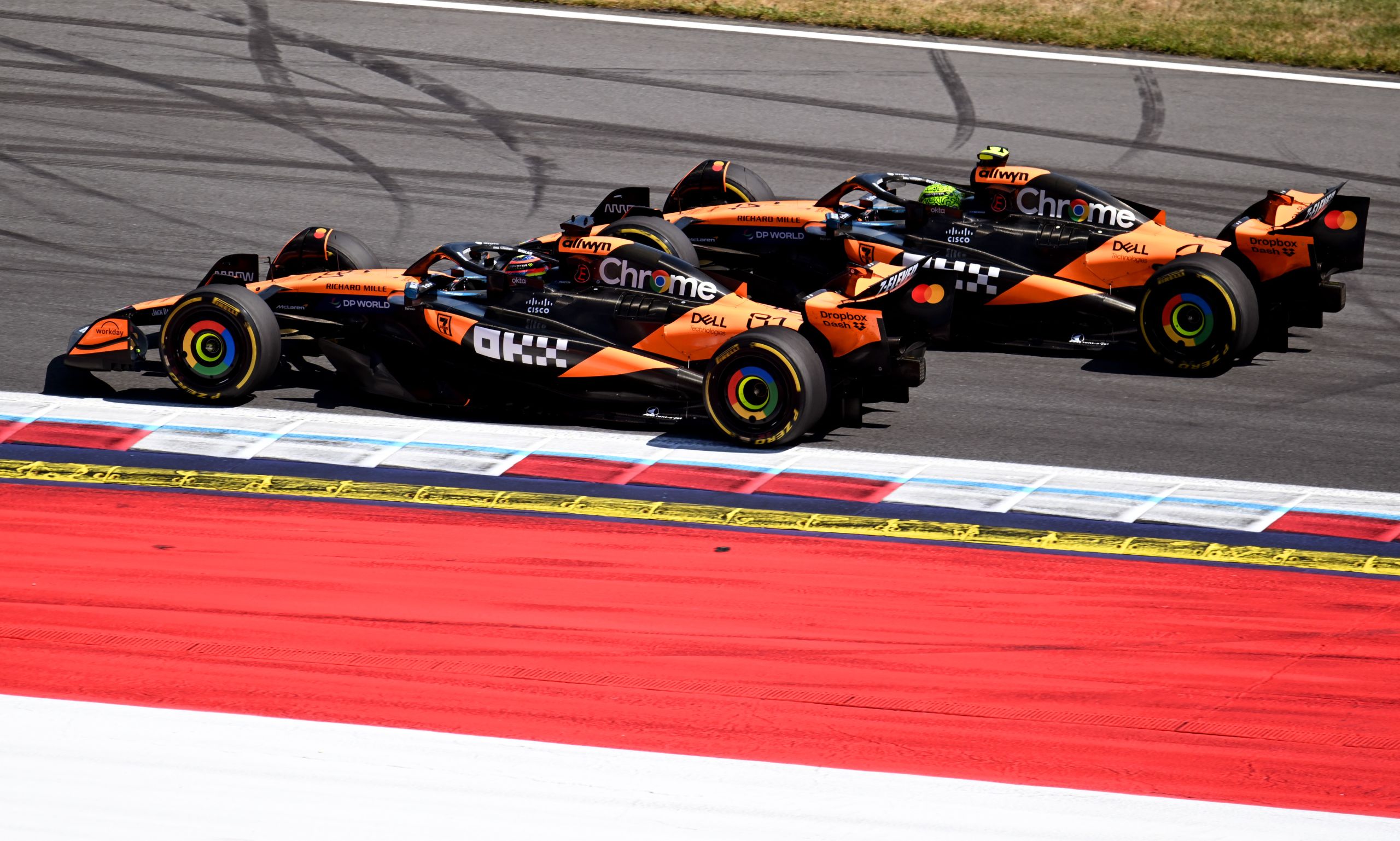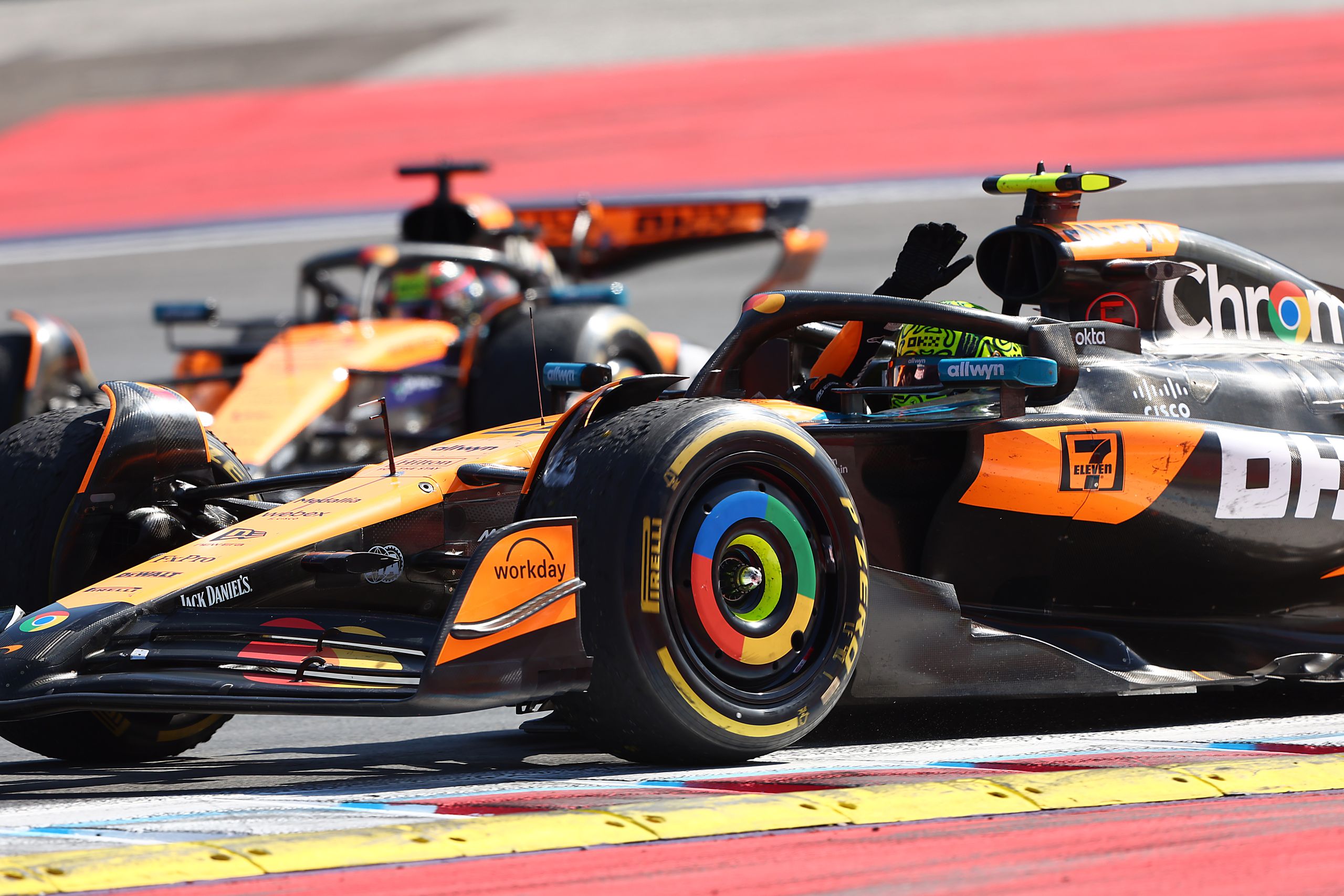2023 F1 Sprint Format: Key Changes and Impact on Racing


The 2023 Formula 1 season has brought exciting changes to the racing calendar with the introduction of an updated F1 Sprint format. Building on the success of the previous two seasons, the 2023 F1 Sprint format now includes six race weekends and adjustments designed to enhance the experience for fans and drivers alike.
One of the main innovations in the 2023 F1 Sprint format is the implementation of the “Sprint Shootout.” In this new structure, the weekend begins with a one-hour practice session on Friday, followed by the traditional qualifying session to set the grid for Sunday’s Grand Prix. On Saturday, a shorter Sprint Shootout qualifying session takes place, determining the starting positions for the F1 Sprint race later that day.
In addition to these changes, the qualifying segments have been shortened, with Q1 lasting 12 minutes, Q2 for 10 minutes, and Q3 running for 8 minutes. Each segment is separated by a 7-minute break, increasing the intensity and tension during these crucial moments. The revised F1 Sprint format promises to deliver a thrilling spectacle for fans, competitors, and teams, offering a fresh and exciting edge to the already exhilarating world of Formula 1 racing.
2023 F1 Sprint Format Overview
In the 2023 Formula 1 season, F1 Sprint has undergone some format changes to provide an exciting experience for fans. Six F1 Sprint races will take place throughout the season, following the positive reception of this format in 2021 and 2022.
New Schedule
The new schedule introduces two qualifying sessions in the F1 Sprint weekends. On Friday, the first qualifying session takes place and determines the grid for Sunday’s Grand Prix. In addition to the first qualifying session, a shorter Sprint Shootout qualifying session replaces the second one-hour practice session on Saturday morning. This new session sets the grid for the F1 Sprint race.
The structure of the F1 Sprint weekend can be summarized as follows:
- Friday
- First qualifying session: Determines the grid for Sunday’s Grand Prix
- Saturday
- Sprint Shootout: A shorter qualifying session to determine the grid for the F1 Sprint
- F1 Sprint: A 100-kilometer race that takes place after the Sprint Shootout
- Sunday
- Main Grand Prix event: The traditional race format incorporating the grid set by Friday’s qualifying session
With these changes to the F1 Sprint format, the 2023 Formula 1 season promises to provide thrilling racing action throughout the year by incorporating two separate qualifying sessions and the addition of the F1 Sprint. Fans can look forward to an engaging and competitive weekend of racing as the sport continues to evolve and grow.
Race and Qualifying Changes
Qualifying Session
The 2023 F1 Sprint weekend format includes two qualifying sessions. The first qualifying session takes place on Friday to determine the grid for Sunday’s Grand Prix event. A second, shorter qualifying session called the Sprint Shootout is held on Saturday morning. This new qualifying session replaces the previous one-hour practice session and sets the grid for the Sprint Race.
Sprint Race
F1 Sprint races were introduced in 2021 and have continued into the 2023 season with a few tweaks. This year, six different F1 Sprint events are scheduled. The Sprint Race is a 100-kilometer dash held on Saturday and is a stand-alone race, as it no longer determines the starting order for Sunday’s Grand Prix. Points are awarded to the top finishers in the Sprint Race, which can significantly impact the overall championship standings.
The Sprint Race tracks in 2023 include the following circuits:
- Baku (Azerbaijan Grand Prix)
- Circuit Of The Americas
- Red Bull Ring
- Interlagos
- Silverstone
- Spa-Francorchamps
Grand Prix
Sunday’s Grand Prix event remains unchanged from previous years, however, qualifying for a Sunday Grand Prix on a Sprint Race weekend will be held on a Friday, not Saturday. Tyre strategies, pit stops, and grid penalties remain critical factors in determining the outcome of the race.
During the Grand Prix, incidents such as accidents or rule violations can lead to penalties or retirements, affecting the overall championship standings. As always, the teams must adhere to Parc Ferme regulations and carefully manage their tyres, utilizing softs or other available compounds.
Overall, the 2023 F1 Sprint format aims to bring more excitement to race weekends with additional qualifying sessions and sprint races, providing fans with more action-packed events throughout the season.
Circuits and Race Calendar
Baku City Circuit
The Baku City Circuit in Azerbaijan will host the first F1 Sprint event of 2023 during the Azerbaijan Grand Prix. The street circuit is known for its tight corners and high-speed straights, which provide exciting racing action for fans.
Lusail Circuit
The Lusail Circuit in Qatar will also host an F1 Sprint event this season. This circuit is relatively new to the Formula 1 calendar, and its fast corners and long straights make it a challenging track for drivers to navigate.
Silverstone Circuit
The iconic Silverstone Circuit in the United Kingdom will also feature an F1 Sprint event this season. Known as the home of British motorsport, the high-speed corners and unique layout make for thrilling racing action, showcasing the best of Formula 1.
Imola Circuit
The historic Imola Circuit in Italy, known for its tight turns and narrow layout, will also play host to an F1 Sprint event during the 2023 season. The challenging nature of the track will test the skills of the drivers as they navigate this classic circuit.
Red Bull Ring
Another F1 Sprint event will take place at the Red Bull Ring in Austria. This circuit consists of a compact layout and several elevation changes that make it unique, providing an exciting spectacle for fans and drivers alike.
Circuit of The Americas
The Circuit of The Americas, located in the United States, will also host an F1 Sprint event this year. The track features a combination of tight hairpins, sweeping corners, and long straights that create numerous overtaking opportunities for the drivers.
Monza Circuit
The legendary Monza Circuit in Italy will join the list of F1 Sprint venues during the 2023 season. Known for its high-speed nature and iconic layout, the circuit provides a perfect setting for the fast-paced, thrilling action of F1 Sprint events.
In summary, the 2023 F1 Sprint series will visit a diverse selection of circuits across the globe, from historic tracks like Imola and Monza to modern circuits like Lusail and Circuit of The Americas, offering an exciting race calendar for fans and drivers alike.
Rules and Regulations
Grid Penalty Rules
In the 2023 F1 Sprint format, there are two qualifying sessions. The first one takes place on Friday, determining the grid for Sunday’s Grand Prix. A second, shorter qualifying session called the Sprint Shootout occurs on Saturday morning, which sets the grid for the Sprint.
The F1 Sprint is a 100-kilometer race without mandatory pit stops, during which drivers give it their all to the finish line. The first-place driver now receives eight points, an improvement from the previous three points, with one point awarded for eighth place.
Power Unit Regulations
The power unit regulations for the 2023 F1 Sprint format largely remain consistent with previous seasons. Each driver is allocated a specific number of power units per season (four), and any additional replacements result in grid penalties.
However, specific changes may take place in the upcoming seasons in terms of power unit allocation and usage limitations. The F1 governing bodies continue to revise and update the rules to ensure a level playing field, promote sustainability, and maintain competitiveness.
Cost Cap
F1 has introduced a cost cap to maintain a fair competition and avoid excessive spending by teams. This financial regulation indirectly influences the F1 Sprint format, as teams need to balance their spending while enhancing the performance of their cars.
The cost cap covers various aspects of team operations, including:
- Research and development
- Production costs
- Salaries for team personnel (excluding drivers and top three team executives)
Any breaches of the cost cap may result in sanctions imposed by F1’s governing body, impacting a team’s overall performance and position in the championship standings.
Driver and Team Strategies
Tyre Choices
In the 2023 F1 Sprint format, tyre choices will play a crucial role in determining driver and team strategies. With the sprint race being shorter than the main event, teams will need to carefully consider their options. For example, drivers like Max Verstappen, Valtteri Bottas, and George Russell may opt for aggressive tyre strategies involving soft tyres in the sprint race, aiming for high grid positions for the main event.
Alternatively, some teams may choose medium tyres for a more consistent performance throughout the race, while also considering tyre wear and degradation. Due to the parc ferme rules, decisions made for the sprint race impact the main event as well, making the tyre choice a crucial factor.
Pit Stop Plans
Pit stop strategies will adapt to the new sprint format. The shorter nature of the race might encourage teams to minimize pit stops as much as possible. In some cases, teams may strive to complete the sprint race without making any pit stops at all, focusing on maximizing track position and minimizing time lost in the pits.
However, some drivers and teams may still plan for pit stops based on tyre wear and potential degradation, especially if they are utilizing a more aggressive strategy with softer tyre compounds. The timing of pit stops will be crucial, as losing positions during the sprint race can directly impact the starting grid for the main event.
Set-Up Adjustments
The 2023 F1 Sprint format will require teams to be innovative with their set-up adjustments. Due to the parc ferme rules, cars will be under constraints that limit the alterations that can be made to engine settings, aerodynamics, and suspension. Therefore, teams must carefully analyze their setups, with drivers like Verstappen, Bottas, and Russell possibly tweaking their cars to suit the unique demands of the sprint races.
The set-up must be flexible enough to accommodate both the shorter sprint race and the main event, while taking into account factors like track conditions, weather, and circuit layout. By finding the optimal balance between performance, reliability, and consistency, teams will be better prepared to adapt to the dynamic nature of the 2023 F1 Sprint format.
Impact on Points System and Championship Standings
The introduction of the 2023 F1 Sprint format has brought about some changes to the points system and the overall championship standings. During Sprint Race weekends, the allocation of points is different compared to traditional race weekends.
F1 Sprint races are 100-kilometer dashes and do not have mandatory pit stops. This encourages drivers to push their limits throughout the race, adding an element of spectacle to the event. In 2023, the points awarded for finishing positions in the Sprint remain unchanged from 2022:
- 1st place: 8 points
- 2nd place: 7 points
- 3rd place: 6 points
- 4th place: 5 points
- 5th place: 4 points
- 6th place: 3 points
- 7th place: 2 points
- 8th place: 1 point
This distribution of points has an impact on the championship standings, as drivers and teams can earn additional points during the Sprint. Consequently, this could lead to tighter competition among drivers and teams vying for the title.
Qualifying sessions are held on Fridays during Sprint Race weekends, which determine the starting grid for Saturday’s Sprint. The outcome of the Sprint subsequently establishes the grid lineup for Sunday’s main event.
In summary, the 2023 F1 Sprint format adds excitement to the championship competition by altering the points system and race weekend schedule. This combination of Qualifying, Sprint Races, and the 100km Dash ensures that both drivers and fans can enjoy a thrilling spectacle throughout Sprint Race weekends.
Fan Experience and Entertainment Value
The 2023 F1 Sprint format introduces an exciting change for fans and promises enhanced entertainment value. The Sprint Shootout, composed of SQ1 (12 minutes), SQ2 (10 minutes), and SQ3 (8 minutes), takes center stage on Friday, replacing the traditional qualifying sessions with a faster and more intense battle among drivers.
These shorter segments limit drivers’ time on the track, encouraging a more attacking approach, which leads to a heightened level of excitement for the spectators. Fans’ anticipation is further elevated on Saturdays as the top eight finishers in the Sprint race earn points, with the winner securing eight points and each subsequent position worth fewer points.
The Sprint format integrates well with the new Practice Sessions schedule. Replacing the previous FP2, the new practice session now takes place on Saturday morning, serving as a prelude to the main event—the Sprint race. This revised schedule ensures fans have compelling and action-packed activities to enjoy across the race weekend.
Some noteworthy aspects of the 2023 F1 Sprint format in terms of fan experience and entertainment value:
- Shorter Shootout sessions encourage attacking, thrilling performances from drivers
- Points on offer for top performers in the Sprint race add an extra layer of competitiveness
- Rescheduled Practice Sessions provide fans with continuous excitement throughout the weekend
The 2023 F1 Sprint format aims to keep fans engaged and entertained, with a potent mix of high-stakes battles, streamlined scheduling, and ample opportunity for thrilling performances from their favorite drivers.
Before you go…
In the ‘traditional’ Grand Prix format, qualifying is held over three sessions on a Saturday afternoon, known as Q1, Q2, and Q3. In Q1, all the drivers have a chance to set a lap time, with the slowest drivers being eliminated. We have put together a complete guide to how Formula 1 qualifying works to help you understand the difference between traditional qualifying and F1 Sprint qualifying.
Related Articles:
How to Watch Formula 1 Qualifying: A Comprehensive Guide for Fans
F1 Qualifying Formats: From Q1 to Q3
Breaking Down the Formula 1 Qualifying Rules: Understanding Penalties, Disqualifications, and More





